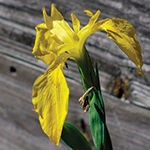
Invasive – Yellow Flag Iris
(Iris pseudacorus)
1. Cardinal Flower

Name: Lobelia cardinalis
USDA HardinessZones:: 2 to 8
Size: 3 to 4 feet tall and 1 foot wide
Conditions: Full sun to partial shade; prefers rich soil with good water retention
It’s no wonder that overpicking has made cardinal flower a rarity in some parts of the country. Its towering, late-summer blooms are irresistible, and their power to beckon hummingbirds is an added bonus. In the wild, this native grows near streams and likes its feet wet. When planted in moist, organic soil, cardinal flower will self-sow with vigor, freely sending up scarlet spires wherever it likes.
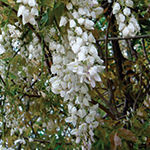
Invasive – Chinese Wisteria
(Wisteria sinensis)
2. Dutchman’s Pipe
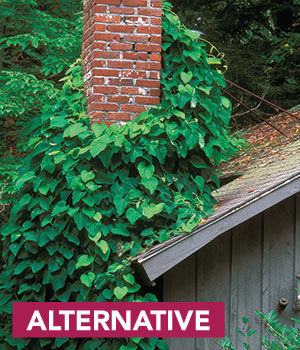
Name: Aristolochia tomentosa
Zones: 5 to 8
Size: 20 to 30 feet tall and 5 to 10 feet wide
Conditions: Full sun to partial shade; rich, well-drained soil
If you want a cold-hardy plant with a tropical look, Dutchman’s pipe is an excellent choice. Low maintenance and fast growing, it will quickly cover a fence or trellis. In spring, this deciduous, woody vine sports pipe-shaped chartreuse flowers, from which the plant gets its name.
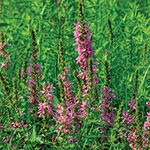
Invasive – Purple Loosestrife
(Lythrum salicaria)
3. Northern Blazing Star

Name: Liatris scariosa
Zones: 5 to 9
Size: 2 to 4 feet tall and 1 to 2 feet wide
Conditions: Full sun; dry to moderately moist soil
The minute we set this plant out at the nursery, monarch butterflies flock to it—and, in turn, so do the customers. A drought-tolerant New England native, northern blazing star produces more flowering wands than purple loosestrife and boasts a more open, airy appearance.
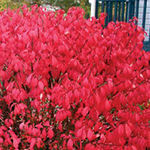
Invasive – Winged Burning Bush
(Euonymus alatus)
4. Iroquois Beauty™ Black Chokeberry
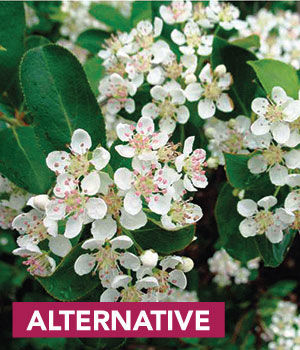
Name: Aronia melanocarpa ‘Morton’
Zones: 3 to 8
Size: 3 feet tall and 3 to 5 feet wide
Conditions: Full sun to partial shade; moderately dry, well-drained soil
Cold hardy and disease resistant, the shapely Iroquois Beauty™ black chokeberry ushers in spring with a plethora of tiny white flowers, then closes out fall with a blaze of deep reddish orange foliage. The clusters of antioxidant-rich black berries that dangle from its branches in summer have a sour bite when eaten raw but are delicious in jams and juices.
Scott LaFleur is the horticulture director at Garden in the Woods, a botanical garden and nursery in Framingham, Massachusetts.
Photos: #1 (invasive) and #2 (invasive), Jeff McMillian, courtesy of Almost Eden; #1 (alternative) , Michelle Gervais; #2 (alternative), William Cullina, courtesy of New England Wild Flower Society; #3 (invasive), Jennifer Benner; #3 (alternative), courtesy of www.easywildflower.com; #4 (invasive), www.millettephotomedia.com; #4 (alternative), courtesy of Missouri Botanical Garden PlantFinder
Fine Gardening Recommended Products

A.M. Leonard Deluxe Soil Knife & Leather Sheath Combo
Fine Gardening receives a commission for items purchased through links on this site, including Amazon Associates and other affiliate advertising programs.


















Comments
Log in or create an account to post a comment.
Sign up Log in